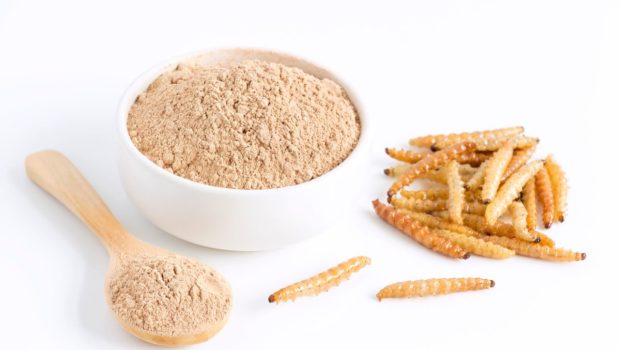Innovation In Food Technology Could Help Bring Insect Flours To Your Pantry
Bamboo worm powder. Researchers from the Karlsruhe Institute of Technology are working on creating ... [+]
Insects could be a key contributor to ensuring future global food security, according to the United Nations’ Food and Agriculture Organization. It may sound unconventional to a person unaccustomed to entomophagy, or the consumption of insects by humans, but there are both health and environmental benefits to introducing bugs to your diet. There’s even research which suggests eating crickets is good for your gut microbiota.
But, what’s the best way to add bugs to your food? Researchers, from the Food Process Engineering team at the Karlsruhe Institute of Technology in Germany are working on perfecting the incorporation of insects into baked goods, especially bread production.
Specifically, they’re researching how extrusion processing affects the functional properties of pulverized mealworm larvae and how they can make those properties more conducive to use in baking. The mealworm larvae powder can be incorporated into wheat flour to create an insect flour, but the differing protein and fat content of the insects changes the dough and can alter the final product.
In many parts of the world, including Thailand, Indonesia, Mexico, and South Africa bugs are already an established source of food. The people who live in these areas which have already embraced insect consumption often eat them whole, however studies have shown processing insects helps make people in Western cultures who have negative associations with bugs more open to eating them. Powdered edible insects which can be used in baking are particularly palatable because they eliminate all visual associations.
With the help of increased availability of processed insect powders, the edible insect market is on the rise globally, and expected to reach a worth of 850 million dollars by 2028.
The rising popularity is spurred in part by the public’s growing demand for sustainable alternatives to meat proteins. In 2018, plant-based food sales topped 3 billion dollars, according to a report by the Plant Based Food Association. Insects are high in nutrients, especially protein and amino acids, making them a viable meat alternative. Additionally, harvesting them for food has far less of an environmental impact than the meat industry — livestock production alone is accountable for about 14.5 percent of manmade greenhouse gases.
The Karlsruhe research group focuses on the Extrusion of biopolymeric materials, analyzing the extrusion process for food research. Currently, they’re analyzing the affect the process has on the physical properties of insect flours. Food extrusion is used in the production of many common foods including pasta, cereal, and bread. The process of extrusion involves grinding up the relevant food material, adding water, and passing it through an extruder. The extruder itself consists of a large rotating screw within a barrel.
The flour’s capacity to dissolve, retain water, and it’s elasticity all have an impact on how it will bake and the final product’s taste and texture. The researchers’ goal is to make the insect flour as similar to traditional baking flours as possible.
A previous study found that though muffins with cricket powder substituted in for wheat flour had a higher protein and lower carbohydrate content, the texture and appearance of the final product were altered, leading to negative consumer perception. So, for insect flours to be broadly accepted, similarity to conventional flour is key.
The researchers are also studying the effect of the extrusion process on the enzymes and microbial contaminants in insect flours, which may in turn impact digestibility.
Baking and sensory tests will be used to help the researchers optimize the production process and create a final insect flour formulation.








Gloss